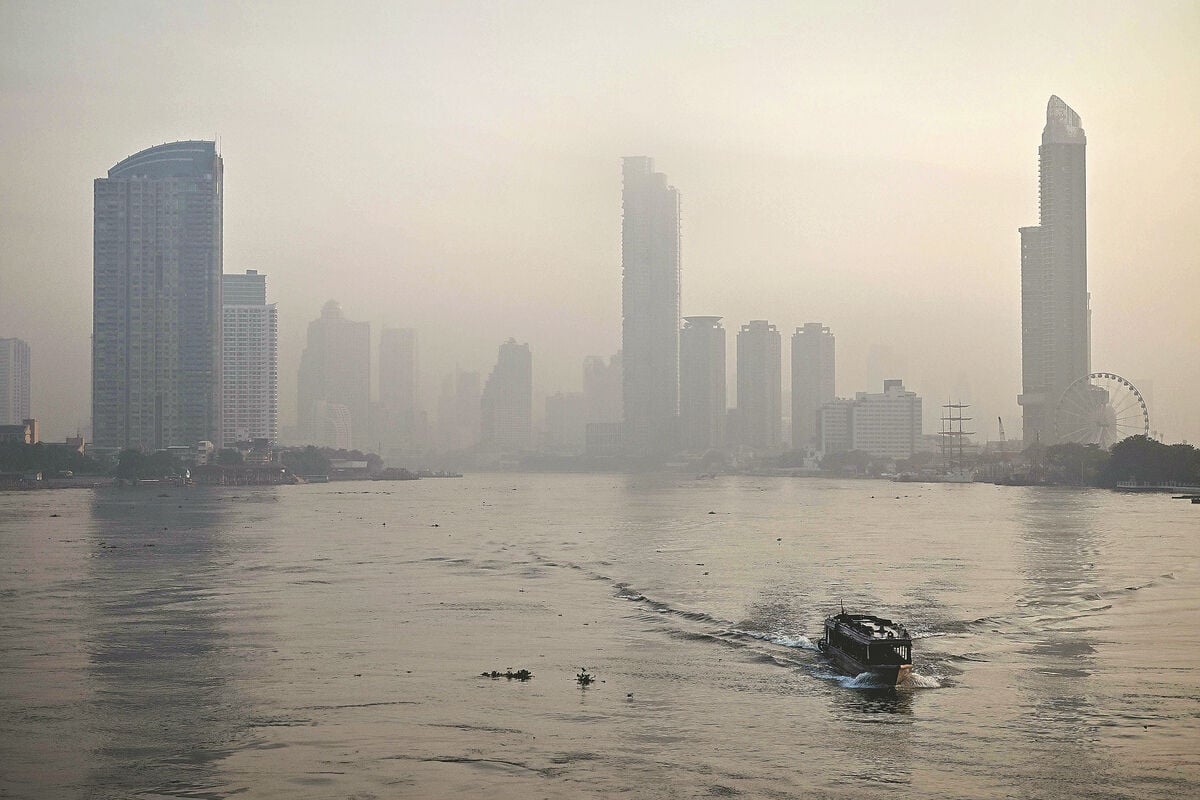Thailand, Laos, Myanmar launch Clear Sky to combat pollution

In a bid to blow away the blanket of smog smothering Southeast Asia, Thailand, Laos, and Myanmar joined forces with a sparkling new initiative: the Clear Sky Strategy 2024-2030.
The grand unveiling took place at Bangkok’s Ministry of Foreign Affairs yesterday, with VIPs Maris Sangiampongsa, Thailand’s top minister, and Chalermchai Sri-on, the Minister of Natural Resources and Environment, leading the charge.
Lending their weight to this bold move were Bounkham Vorachit and Khin Maung Yi, natural resources ministers from Laos and Myanmar, respectively. This coalition follows hot on the heels of the ASEAN Agreement on Transboundary Haze Pollution, inked last June.
Not satisfied with just signing on the dotted line, Thailand had already jumpstarted the conversation with an online summit in April to tackle the smoky showdown.
Enter the Clear Sky Strategy, a comprehensive action plan set to clear the air for good. The strategy’s catchy acronym “CLEAR” stands for Continued Commitment, Leveraging Mechanisms, Experience Sharing, Air Quality Networks, and Response. It’s not just an action plan, it’s a roadmap to a haze-free horizon.
Expect a major conference to sweep across Bangkok later this year, pulling together all parties of the agreement for further action.
Industrial pollution
Addressing the audience with characteristic urgency, Maris flagged the dire need for Southeast Asia to stamp out pollution caused by industry, vehicles, agriculture, and especially those pesky forest fires.
“As the year winds down and temperatures drop, PM2.5 levels invariably flare up. We need this plan to snuff out future pollution threats.”
Maris also underlined the necessity of global teamwork to combat these menacing challenges.
Chalermchai made it crystal clear, that his ministry is laser-focused on quashing forest fires and the cross-border haze that comes with them.
“We’re all about turning words into action, working hand in hand with our neighbours for concrete results.”
The Clear Sky Strategy 2024-2030 is no mere pipe dream, it’s a landmark leap for regional cooperation aimed at tackling a serious environmental scourge impacting millions throughout Southeast Asia.
What Other Media Are Saying
- Ministry of Foreign Affairs highlights diplomatic engagements, emphasizing Thailand’s commitment to global cooperation and human rights, with a focus on official visits and bilateral cooperation.None (read more)
- Thailand, Lao PDR, and Myanmar have jointly endorsed the CLEAR Sky Strategy to manage transboundary haze, focusing on fire control, haze monitoring, sustainable agriculture, and enforcing environmental laws. (read more)
Frequently Asked Questions
Here are some common questions asked about this news.
Why is the Clear Sky Strategy crucial for Southeast Asia’s future?
It addresses severe haze pollution, impacting health, economy, and ecology, fostering regional unity and sustainable environmental practices.
How might the Clear Sky Strategy transform regional cooperation dynamics?
Establishing a shared roadmap encourages collective responsibility, resource sharing, and unified action against pollution challenges.
What if the Clear Sky Strategy succeeds beyond expectations?
It could set a global precedent for regional environmental cooperation, inspiring similar initiatives worldwide to combat transboundary pollution.
How do leveraging mechanisms play a role in the Clear Sky Strategy?
It enhances resource efficiency, promotes technological exchange, and ensures effective implementation of pollution control measures.
What challenges might arise in implementing the Clear Sky Strategy?
Potential obstacles include coordinating cross-border efforts, aligning national policies, and securing sustained political and financial commitments.
Latest Thailand News
Follow The Thaiger on Google News:


























